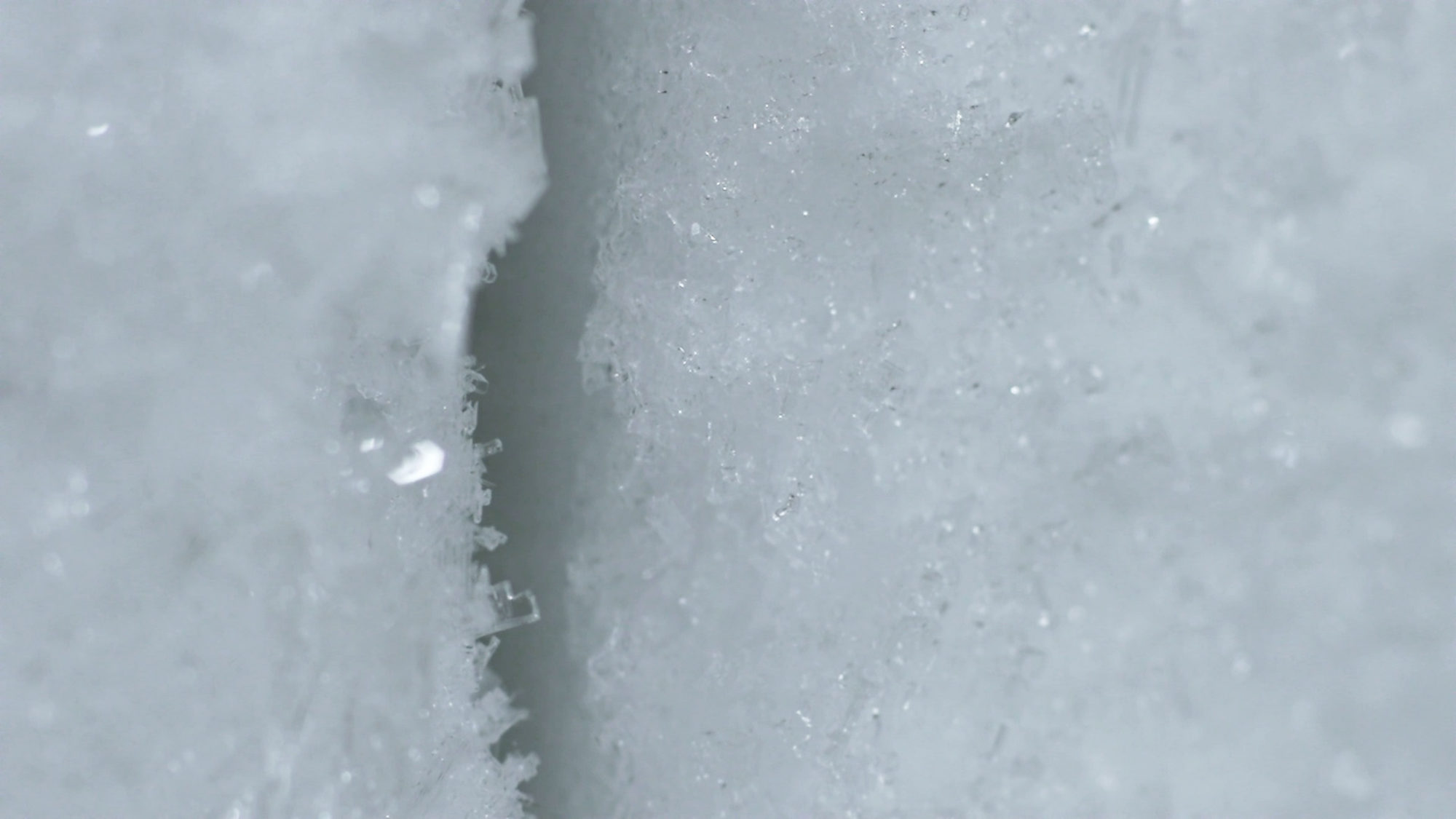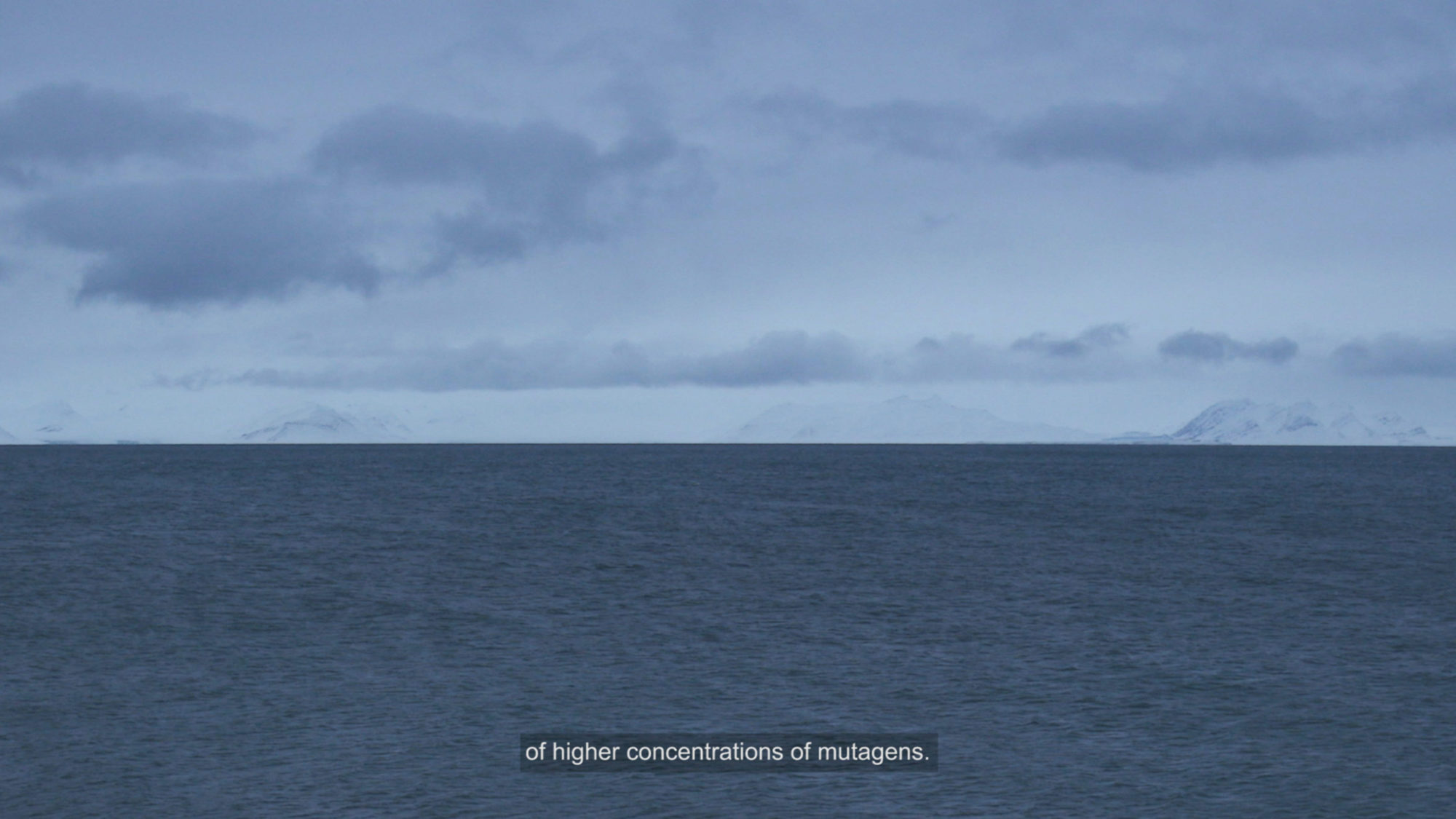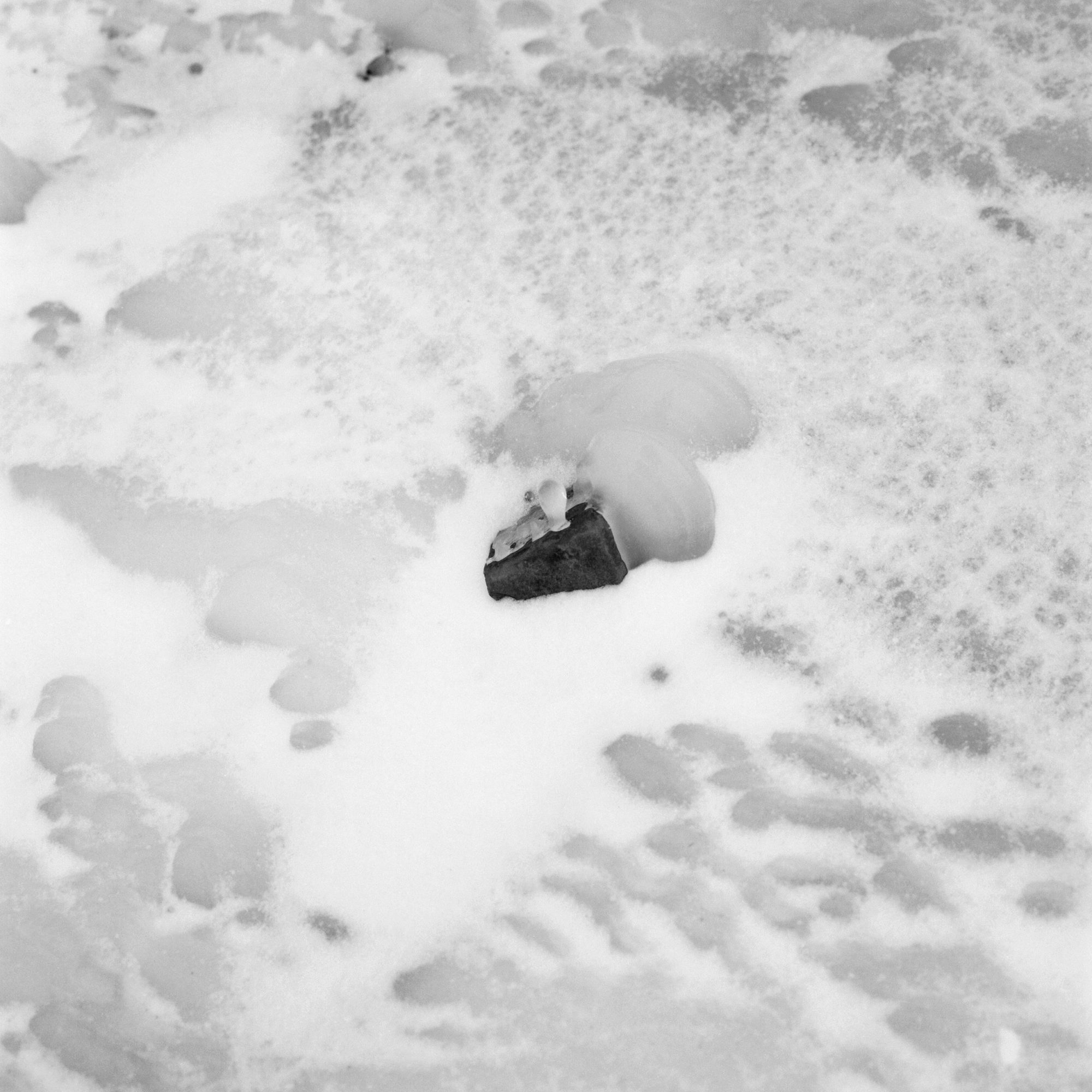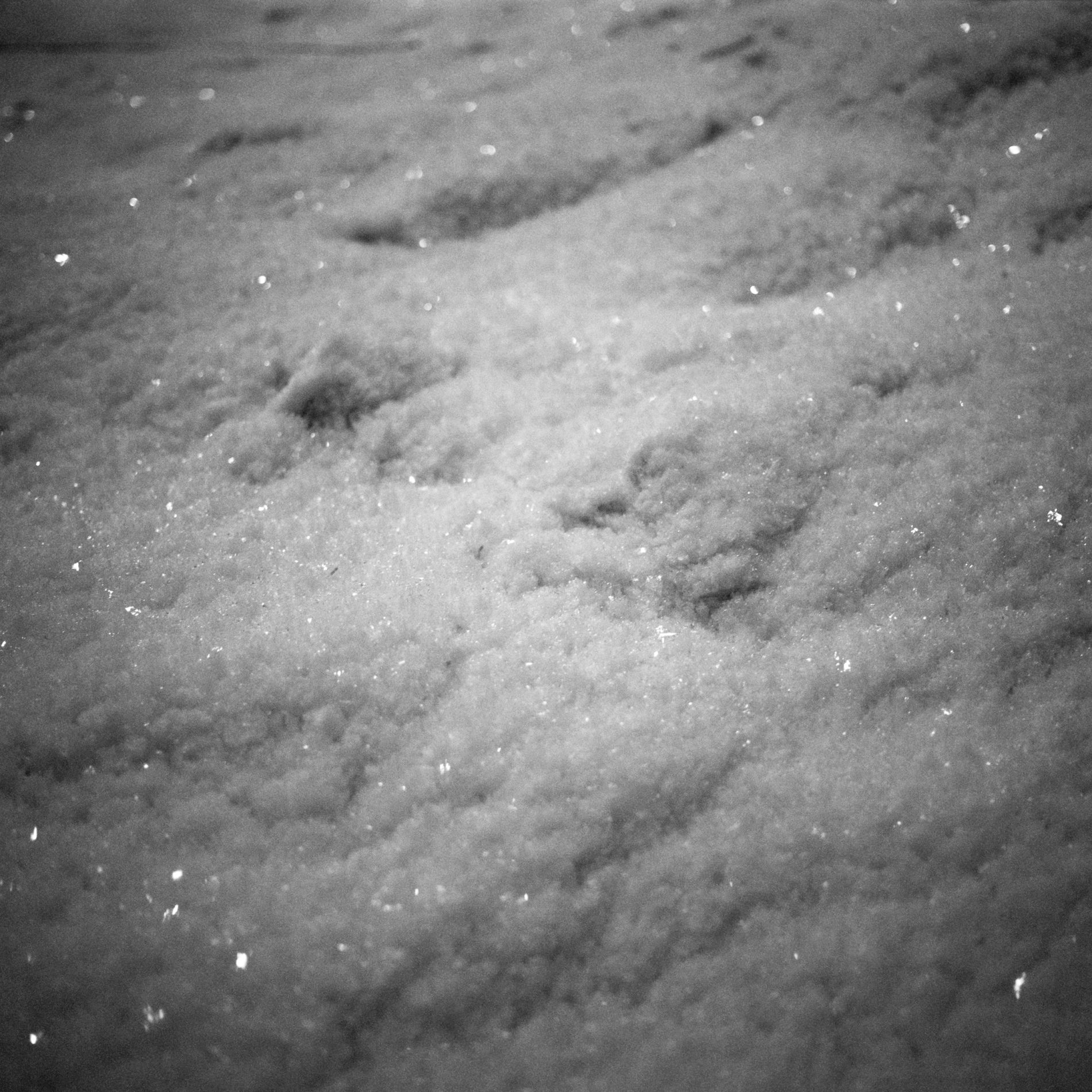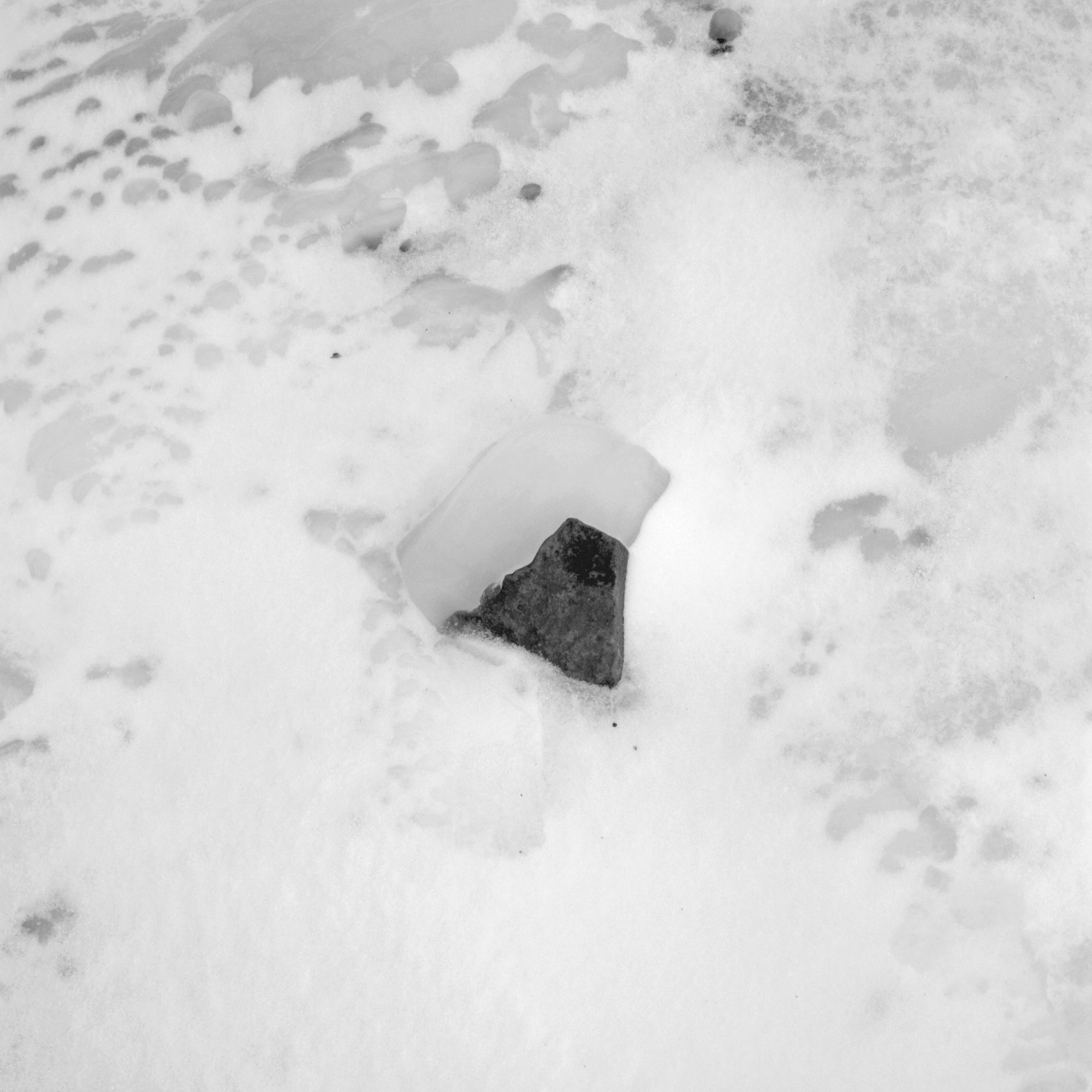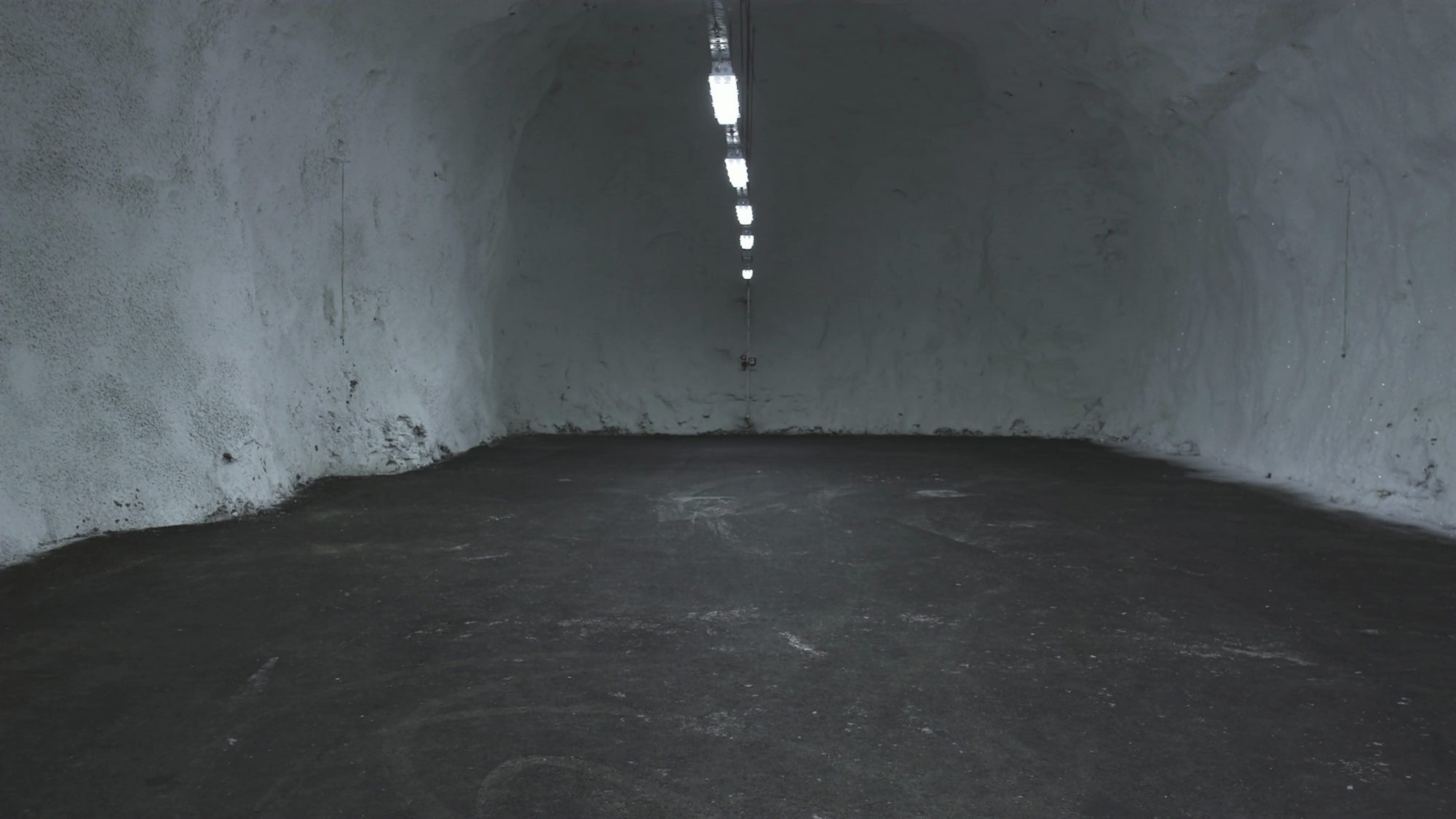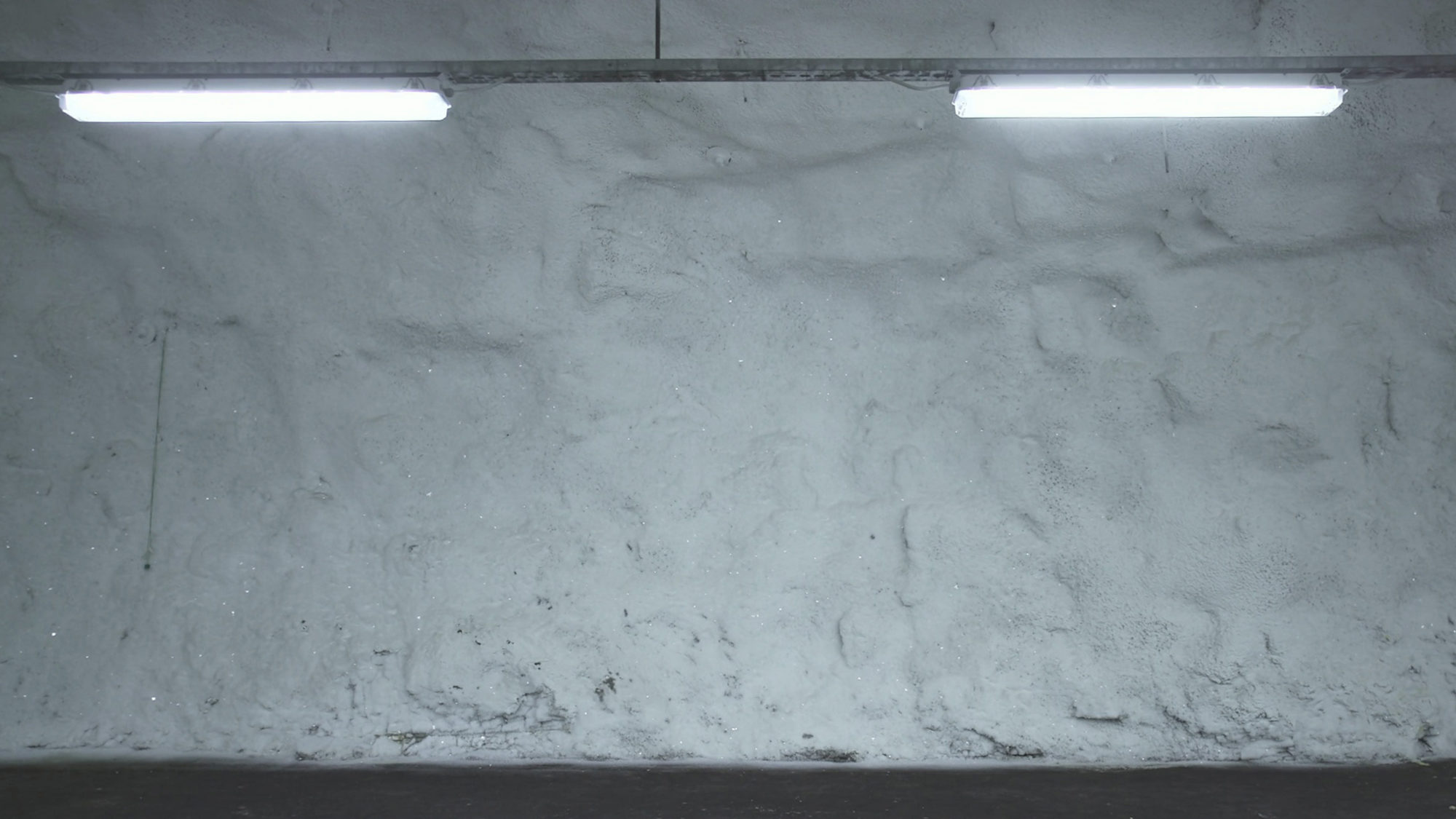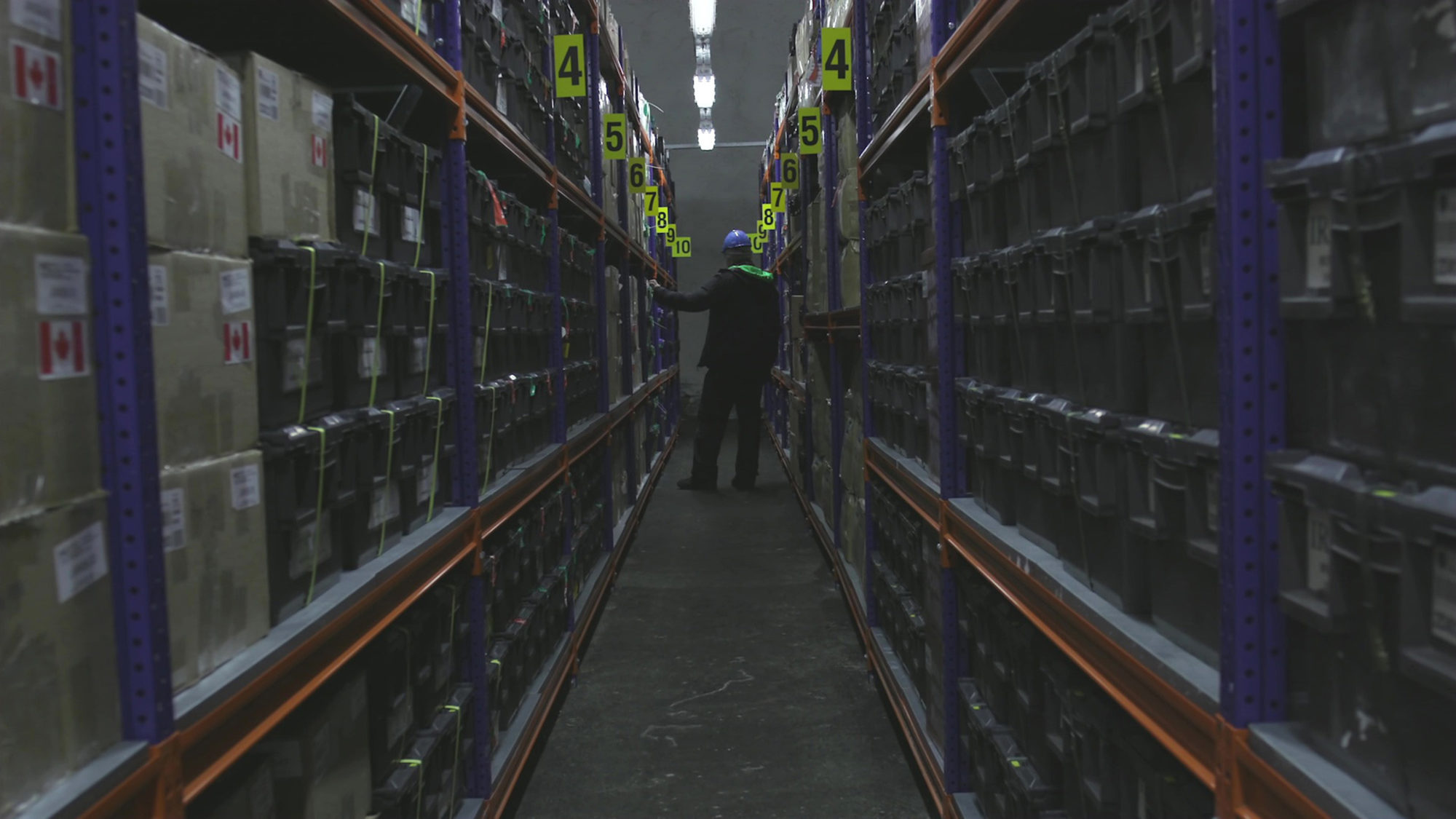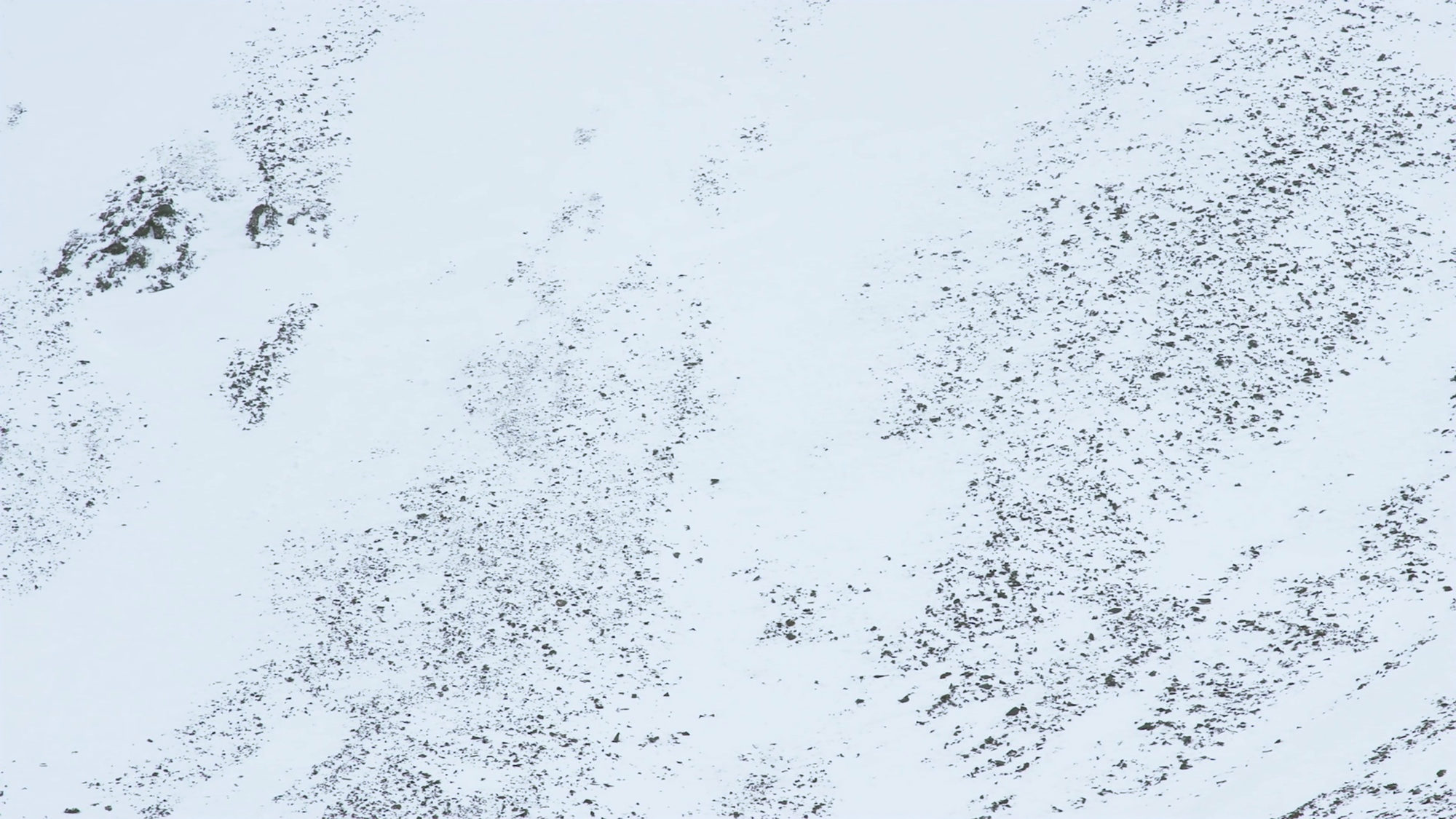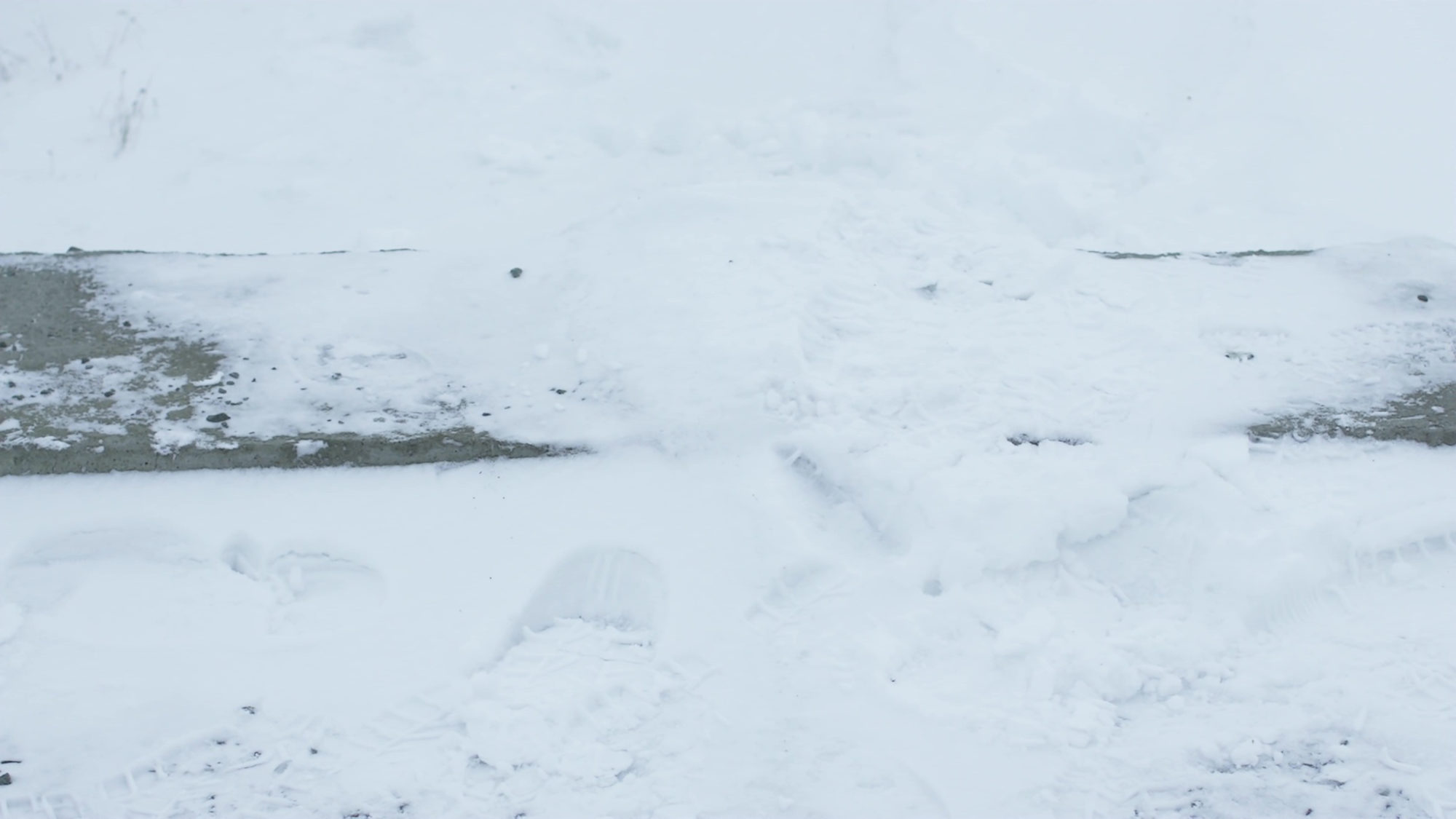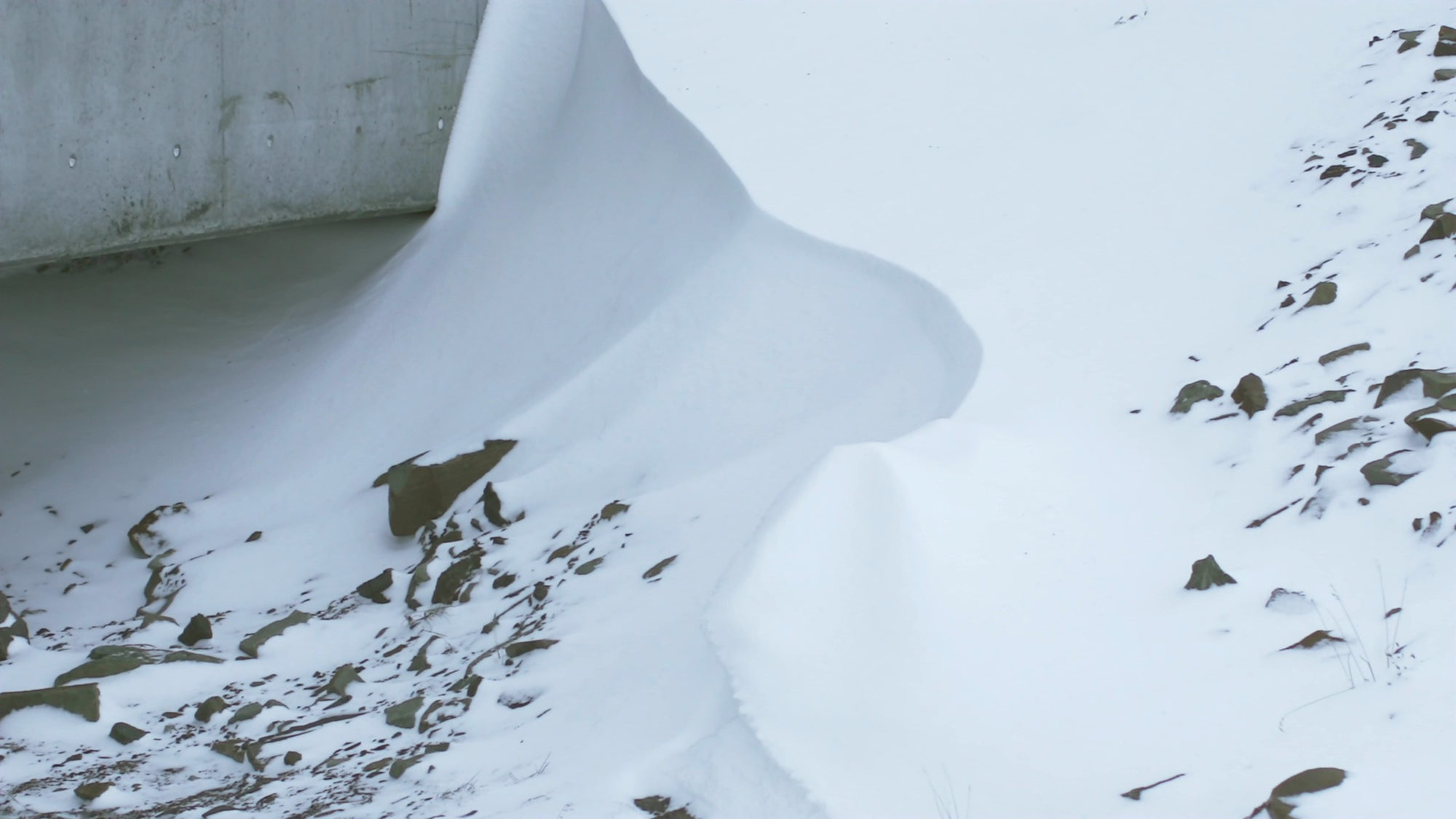
Michael John Whelan, The Good Soil, video, 2016 [all images courtesy of the artist]
The Good Soil: Michael John Whelan
Share:
What drew you to Svalbard, and how did you feel once you were there?
I first came across the Seed Vault in 2008, when its opening was reported widely in the media. I knew Svalbard a little already from research I did in college about radar arrays. I was looking at a really interesting radar system on Svalbard that is part of the European Incoherent Scatter Scientific Association (EISCAT). As well as studying interactions between the and the earth, EISCAT is also part of the Space Situational Awareness Programme of the European Space Agency. It wasn’t until 2014 that I came back to Svalbard within my research. At the time, I was working on a project looking at the last Irish wolf, was killed in 1786, [and] exploring my anthropomorphic association with this animal and the link between wolves and the Irish people in their battle for independence. From this project, I wanted to develop both a biological and geographical query that addressed not just a historical perspective, but also a future one. I was researching areas related to the histories of whaling, astronomy, and botany, looking specifically at the botanist John Hill and the city of Hull. John Hill was a notorious character from 18th-century England who contributed greatly to the advancement of botany, but was ultimately a victim of his own ambition. During the same … period Hull was a major whaling city. Due to the proliferation of whale oil and its use in street lamps, by the 1750s it was one of the brightest cities in the world. This led me to two potential areas of research: the Global Seed Vault, and the appearance of a rare white humpback whale off the coast of Spitsbergen in 2012. In 2015 I made my first trip to Svalbard to begin working on both projects.
Svalbard, and its vault in particular, is more mundane than I expected, but spectacular in a number of distinct ways—when you walk around the shelves of the freezing vault, like walking around the Arctic tundra, there is a sobering feeling of inescapability, and a constant reminder of both our physical fragility and our inherent mutability towards environmental and political issues.
Svalbard is ultimately the best geographical example I have found of a place that is at the juncture of past and future ideas. It’s hard not to constantly think of its past: miners and whalers toiling in the freezing winds, killing, extracting, removing. It is a place of changing states—whale blubber, for example, was processed into oil, which was burnt to create light, which in turn contributed to urbanization. Hull was connected to Svalbard, often sending whalers to locations there—to Bellsund, for example. These events are all connected.
For my next project, I am photographing the certified darkest places in Europe—because of the ever-increasing light pollution from urban sources.
How would you say your work reflects your personal relationship with Svalbard, both as a site and a situation?
I find the remoteness of Svalbard a little misleading, as it is historically a land of corporate and government interests. It is a place of binaries, where the movement of glaciers brought up coal, but never made a profit. Where tourists fly in on commercial 737s and arrive on German cruise liners, but seldom experience the real . It is emblematic of global and political machinations, and it is a place where we can see the future clearly. To author Ian McEwan, the Arctic is a planetary barometer of climate change; it tells us things are changing, and that we are implicated in that change.
As mentioned earlier, the majority of my work to date has focused on Svalbard’s Global Seed Vault, the mountain Platåberget, and the coastline. Working with the vault is conceptually challenging; it is such a charged location. Everything is so “real” when you are there: the succession of secure entrances, the temperature extremes, the smell of the damp earth surrounding the tunnel towards the vault, the whirring of the coolant system fans, and the echo of the empty space. But the vault is equally abstract: a construct built for the future, for a projected reality. It is a combination of science fiction and fact. With my photography, video, and sound works, I like to present facets that reflect the whole, referencing infrastructures and elements of the mechanics . For example, the water from the vault’ssystem is the subject of the work In the black dark for good: after being ejected out onto the mountain, its changing state from liquid to solid is influenced by the Arctic wind, slowly covering the ground and rocks, forming strange shapes.
I am also interested in the potentiality of the vault—in making work in the (as yet) unused empty spaces. This also reflects the potentiality of Svalbard itself, as a site of a projected future. As the ice melts, and the shipping lanes open, how will the geographic position of Svalbard affect its political and global relevance?
